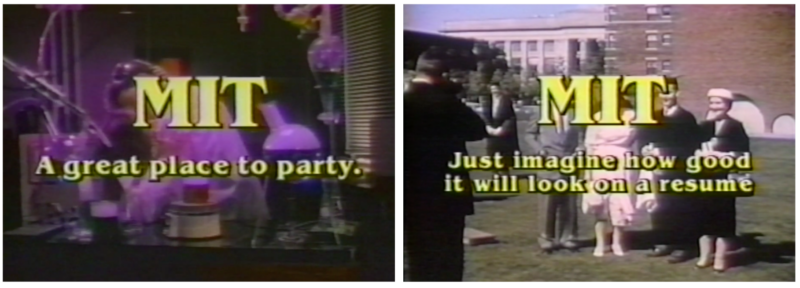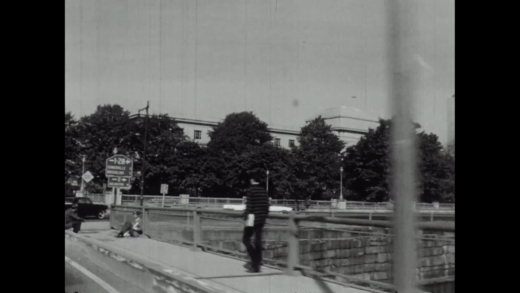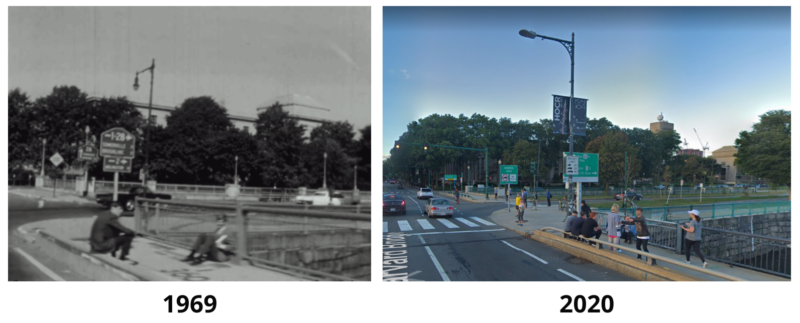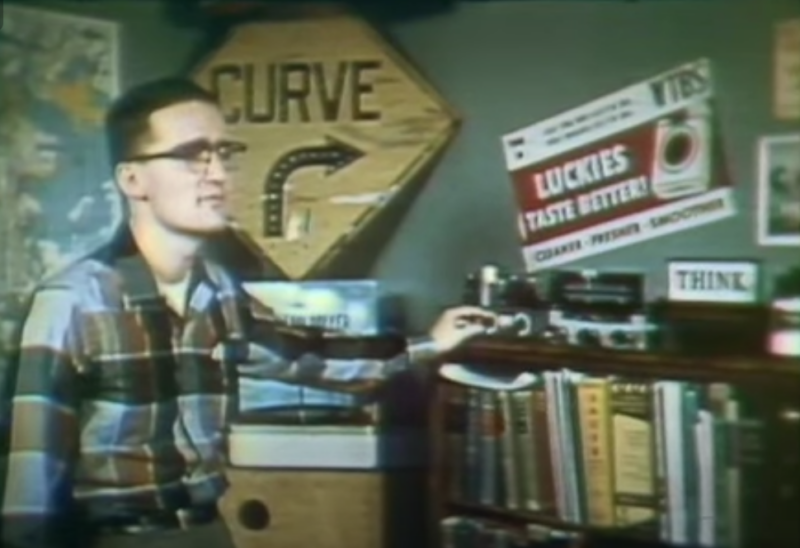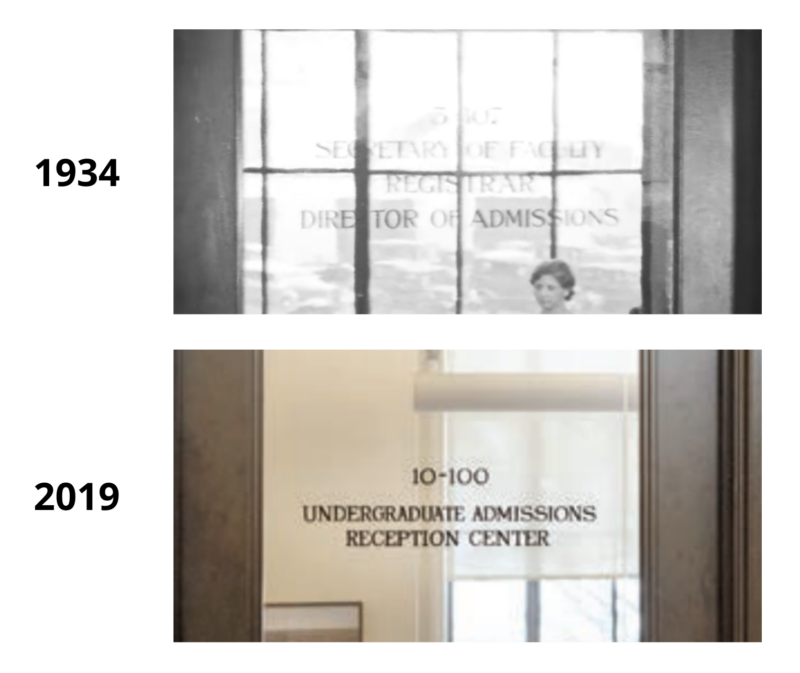
5 Historical MIT Videos by Kathleen E. '23
looking back on what we left behind
Over the last few weeks I have found five historical videos of MIT, ranging from 1994 all the way back to 1934! In this post, I’ve embedded the five videos (in reverse chronological order) and written some notes and thoughts about them. I also pulled some pictures and gifs of the most striking old-timey scenes I found.
In total there’s around 2.5 hours of video (or 1.25 hours if you watch it all on 2x speed). I’d say it’s a worthwhile watch and can be helpful if you’re missing MIT like I am. Some things have thankfully changed a lot, but a lot of things seem like they could have been taken just a few months ago. Check it out:
Table of Contents
1. Young, Gifted, and Black: Black Women at MIT (1994)
1. Young, Gifted, and Black: Black Women at MIT (1994)
28 mins
In Cambridge, Massachusetts, just across the river from Boston, lies the Massachusetts Institute of Technology, one of the world’s most famous universities. MIT students are some of the most talented and intelligent students alive, and among them are many Black women – women who have had to overcome many intellectual and social challenges at MIT.
The students and researchers in this video share interesting stories and perspectives both about their general academic experiences and the way being a Black woman has shaped their MIT experiences. Here are some parts that stood out to me because of their connection to 2020:
- Undergraduate experience: The second woman featured in the video is a first-year undergraduate named Lakisha Powell (’95). I loved when she started listing subject numbers and I knew what they were – it was a nice reminder that our number-centric labelling system unites decades of MIT alumni. Lakisha then explained the various pieces on the protoboard she was using in 8.02x,01 An experimental version of 8.02 which she carried in a red “lunchbox” that reminded me of the gray “lunchboxes” my friends in 6.08 received this past semester to hold their class materials.
- Professors: Three women in the video are now professors!
- Paula Hammond (’84, PhD ’93), is now the Head of the Department of Chemical Engineering at MIT! At the time of the video, she had recently received her PhD and was discussing her research on polymer formation. In her feature, she discusses how three major milestones in her life (getting a job, graduate school, and marriage) occurred in the reverse order that she had planned as an undergraduate. She mentions meeting her husband, fellow MIT alumni John Hammond. To my surprise, I saw John featured in another video in this post (see the next piece titled “MIT: The Movie” from 1992)!
- Carol Espy-Wilson (PhD ’87, among other degrees) is now a Professor in the Electrical and Computer Engineering Department and the Institute for Systems Research at the University of Maryland.
- Olaronke “Ronke” Olabisi (’93) is now an Assistant Professor of Biomedical Engineering at UC Irvine.
2. MIT: The Movie (1992)
18 mins
I think students who come here should be ready to let their passions fly. This is a place that is very conducive to taking these passions, these dreams, and molding them into reality.
This video was made by the MIT Admissions team back in 1992 to serve as an informational advertisement about the MIT undergraduate experience. It’s definitely a little cringey. The video starts with an admissions officer demanding a video be made to explain MIT to prospective students. The admissions officer critiques the video at certain points, forcing it to repeatedly pivot to appeal to the priorities of different groups (such as students vs. parents) and pointedly address misconceptions about being an MIT undergraduate.
- To begin the cringe, the video opens with two students in a lab. They abandon their work, take off their safety goggles, and begin making out. Remembering that parents are watching, the focus changes to a short segment on how an MIT education is a valuable investment. Despite the awkward delivery, I guess both of the points below are true.
- The students are asked “What was the first year like?” and one responds that he thought the first two or three weeks were easy, and then after that everything changed. This resonated with me – from when I first arrived on campus for my FPOP until around the second week of classes, life at MIT was so chill that it felt surreal. After that, things got a lot more bumpy. Although I might have expected it, actually encountering difficulties in my coursework and tackling the burden of increased personal responsibility was an uncomfortable surprise in my freshman year. The students also mention MIT’s policy of grading first-years on “Pass/No Record,” for which I am very grateful.
- The students are also asked what it means to be “smart” at MIT.
- One mentions that by coming here, students accept a lifestyle which emphasizes studying. I think this holds truth for me; to maximize my exposure and involvement to the firehose of opportunities at MIT, I feel like I’m always working on something, though I wouldn’t always call it “studying.”
- A student says that he doesn’t think he’s “smart” as much as he is hardworking, followed by another student emphasizing persistence over “smartness.” These sentiments have become more and more true for me as I encounter harder material – concepts rarely make sense when they’re first explained. I only feel like I understand after I’ve finished several problems utilizing a concept. It takes a lot of persistence for me to not get frustrated and give myself time to get to the lightbulb moment, week after week. Being surrounded by other students who have gone through and continue to go through this process helps a lot.
- The chaotic ending scenes feature John Hammond, which to the best of my knowledge is the husband of Paula Hammond, an alumna featured in the first video in this post!
- The end credits show someone on a bike riding under the Big Sail, which I need to remember to try when I get back to campus.
3. MIT: Progressions (1969)
25 mins
This long-lost video from the MIT Museum highlights student activism. There were a lot of quotes that I feel have parallels to today:
Seems like all of the departments I’m dealing with are broadening their scopes, looking at certain problems from all sorts of other viewpoints other than the technological one. People are looking at the things their doing in the ways that they affect people. (1:30)
We always need more of this, especially at MIT. There are countless areas where this reckoning is needed, from climate change to defense technology, but due to my own academic interests I have tended to focus on MIT’s leadership in artificial intelligence research. I hope we can become as strong a leader in identifying and combatting the issues that AI can perpetuate or create (such as racial and gender bias) and use our institutional power to actively resist using AI in harmful ways.
MIT has traditionally been known as a very apathetic school, and how exactly this relates to the emphasis on science here I wouldn’t want to go into. However, it has been very noticeable that over the past few years – I’d say past three years – the active involvement of the MIT student body has been increasing. (1:48)
Just like this student from 1969, I’ve noticed a recent increase in the active involvement of the student body. Since I arrived on campus, I’ve felt like too many MIT students shy away from publicly discussing, let alone taking an active stance, on social and political issues. I came from a high school debate team where we spent a lot of time grappling with different issues and debating what the best solutions might be, so finding such little enthusiasm for these sorts of discussions on campus was frustrating. I feel that we all have an obligation to educate ourselves on global issues and take a stand to be the change we want to see in the world.
With the recent global amplification of the Black Lives Matter movement, I’ve seen more individuals and groups at MIT voice their thoughts and engage in discussions about important issues. Some individuals and groups reflected on how they contribute to ongoing racial inequities and made pledges to make changes. The UA and many other student groups took action by organizing donation fundraisers and creating petitions to re-emphasize the need for MIT to implement recommendations from the BSU/BGSA. I hope we can continue discussing and taking action on the issues that are important to us. We all need to step up for things to change.
I think it is this spirit of continual improvement, feedback, self-criticism… which is responsible for what is going on right now. In other words, to me at least, much of today’s unrest among students in the world, and young faculty members, comes from what people have called the expectation gap. They know what the world could be, and they also know what it is. (6:15)
The “expectation gap” is a new term for me, but I like it as a framework for thinking about what we want the world to be and identifying where we are now relative to that goal.
The Institute has changed quite a bit, since I’ve been here for four years. We’re trying to change student government, there’s been a flurry of political activity now. (11:28)
This quote also feels parallel to today. With a quote above I’ve explained how MIT’s student body has seen an uptick in political activity. With regards to student government, MIT recently elected Danielle Geathers, the first Black woman president of our Undergraduate Association (which is basically MIT’s student government). Danielle’s platform aims to make many restructurings to the UA and its foci, differing most notably from past administrations by creating a Diversity Council and emphasizing the need for more progress on the 2015 BSU recommendations. I’m excited to see where these changes take us.
The frontiers of a contemporary university are basically the same as the frontiers of human concerns, whether it be scientific curiosity or whether it be the problems in our society and in our world… to all these concerns science and technology are terribly relevant. (15:30)
I agree with this and hope that the world can stop treating science and engineering as though it is apolitical. Institutions and scientists perpetuate their politics through their operations and innovations.
There were a lot of things that also highlighted how much has changed:
- 5% of undergraduates were women: In the video, a group of women students are discussing their experiences at MIT. One of them says, with a small smile, “Social life is nothing to snub… I mean with the 20 to 1 ratio, you can’t lose.” Her friend says “stupid” (some other words inaudible) and she responds, laughing, “Well, I’ve enjoyed it.” It’s crazy to think about how it would have been to be a woman at MIT when only 5% of undergraduates were women. A lot has changed in 50 years.
- Harvard bridge: The video has a shot that pans down the Harvard bridge! I took a screenshot from Google Earth to help with comparing to how it looks today.
- Similarities: The smoots are there, there are people sitting on the metal rail between the sidewalk and the road, the railing looks the same.
- Differences: The road signs have a different shape and font, the lamp post is differently oriented and shaped, the trees seem taller.
4. The Social Beaver (1956)
30 mins
This video was produced by Oscar H. Horovitz from the Class of ’22. Not 2022 (like I am), but 1922. This was definitely the most boring of all the videos. Some notable things:
- Killian Court was referred to as the “Great Court” which makes sense because Killian was renamed in 1974 after James Rhyne Killian Jr., the president of MIT from 1948 to 1959.
- One student has a (likely stolen or scavenged) road sign in their room. This is funny because this continues to be a common thing today at MIT (and many other colleges across the nation) but I didn’t realize it was a trend so many years ago.
- It was hard to watch this video at many points because of the way women were treated and portrayed. This was made back when MIT was effectively just a men’s university, with less than 2% of undergraduates identifying as women. Countless parts of the video, from a comment referring to the Head of House apartment in the dorms as being for a “faculty resident and his wife” (today this role is also held by faculty who identify as women) to a part of the video displaying the one small dorm off-campus which housed women, emphasized to me how excluded women were from higher education just decades ago. It’s odd to realize that the vast majority of MIT alumna are relatively recent graduates.
5. Technology 1934
50 mins
This is a silent film. It tells a great story of a student who gets a letter inviting him to come for a tour of MIT. It’s an exciting tour – I used to work part-time as a tour guide at MIT, and this 1934 virtual tour includes way more demonstrations of the tools being used and the science occurring at MIT than our modern tours do. By watching this video, I guess I went on a virtual tour at MIT (which we’re back to doing now due to COVID-19).
Some things that blew my mind:
- The typeface on the glass windows of doors in the Infinite Corridor is the same in 1934 as it is today! I learned that all of these doors are hand-pained. Any recent door paintings have been made by a man named Glenn Silva. You can watch him painting a door in this YouTube video and read more about him here and here.
- They go inside a part of Building 5 I’ve never entered (to my knowledge it is locked) where there are lots of miniature, intricately made boats. It is apparently called the Hart Nautical Gallery. Seeing the historical value helps me make sense of why this gallery is locked (I never bothered looking into it earlier).
- The School of Architecture was located across the Charles in Boston (it’s now in the main building in Cambridge)! The students in the video were making absolutely beautiful art on a variety of mediums. This part of the video was the only time I saw women featured (aside from two secretaries that briefly interact with the visiting student).
- The types of science going on throughout the video are obviously less emphasized today, but they look so fun. I wish smelting or wind tunnels were still a big thing, at least for recreational purposes.
- The touring student goes through a pile of MIT publications. Among them I see The Tech and VooDoo (which were established in 1881 and 1919, respectively)!
It’s odd realizing that at some point, the videos made from my time at MIT will be deemed historical; that our speech patterns, clothes, and video editing will seem as dated as these do now. Looking back was cool and provided a lot of chances to reflect on how my MIT experiences ties into the progression of history at large.
- An experimental version of 8.02 back to text ↑
